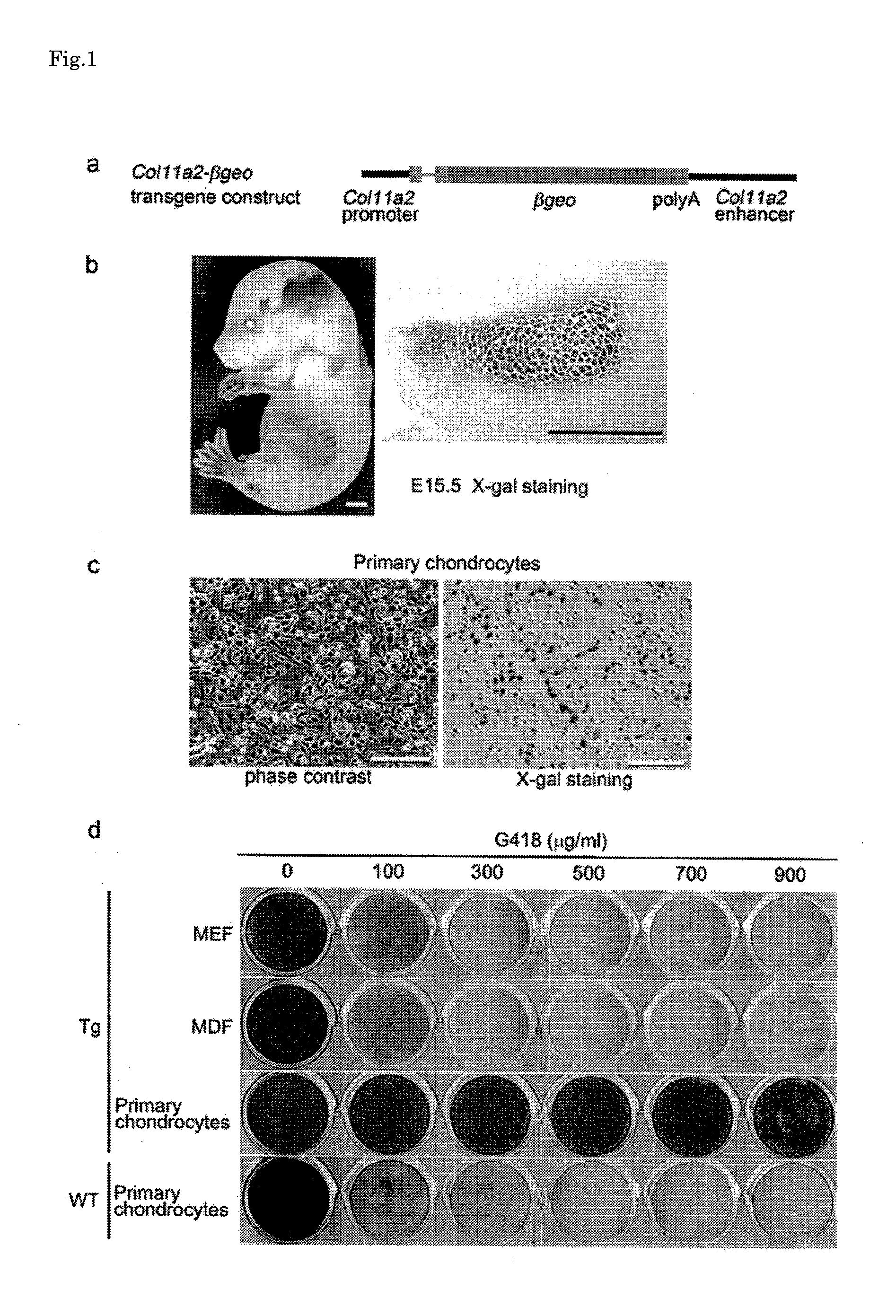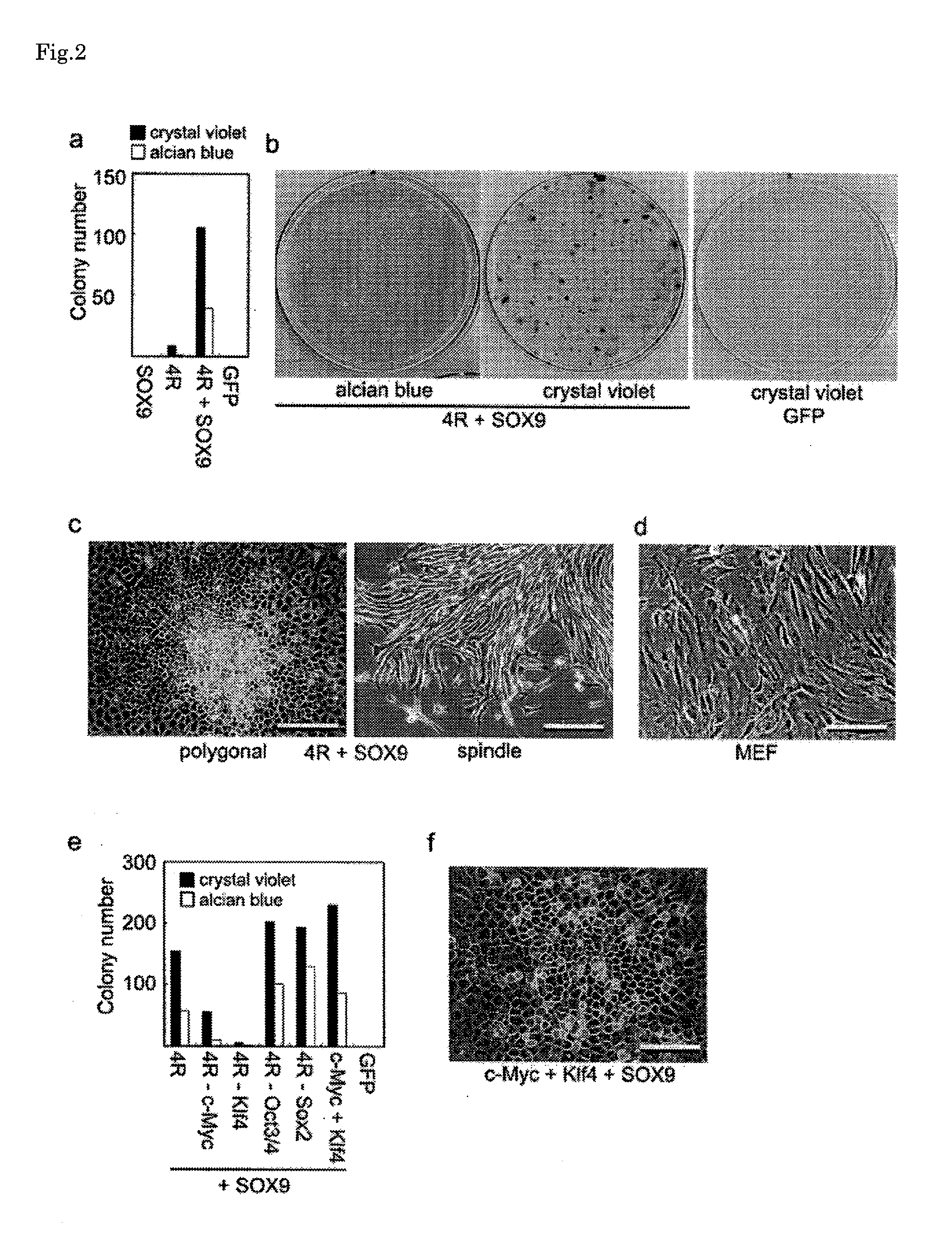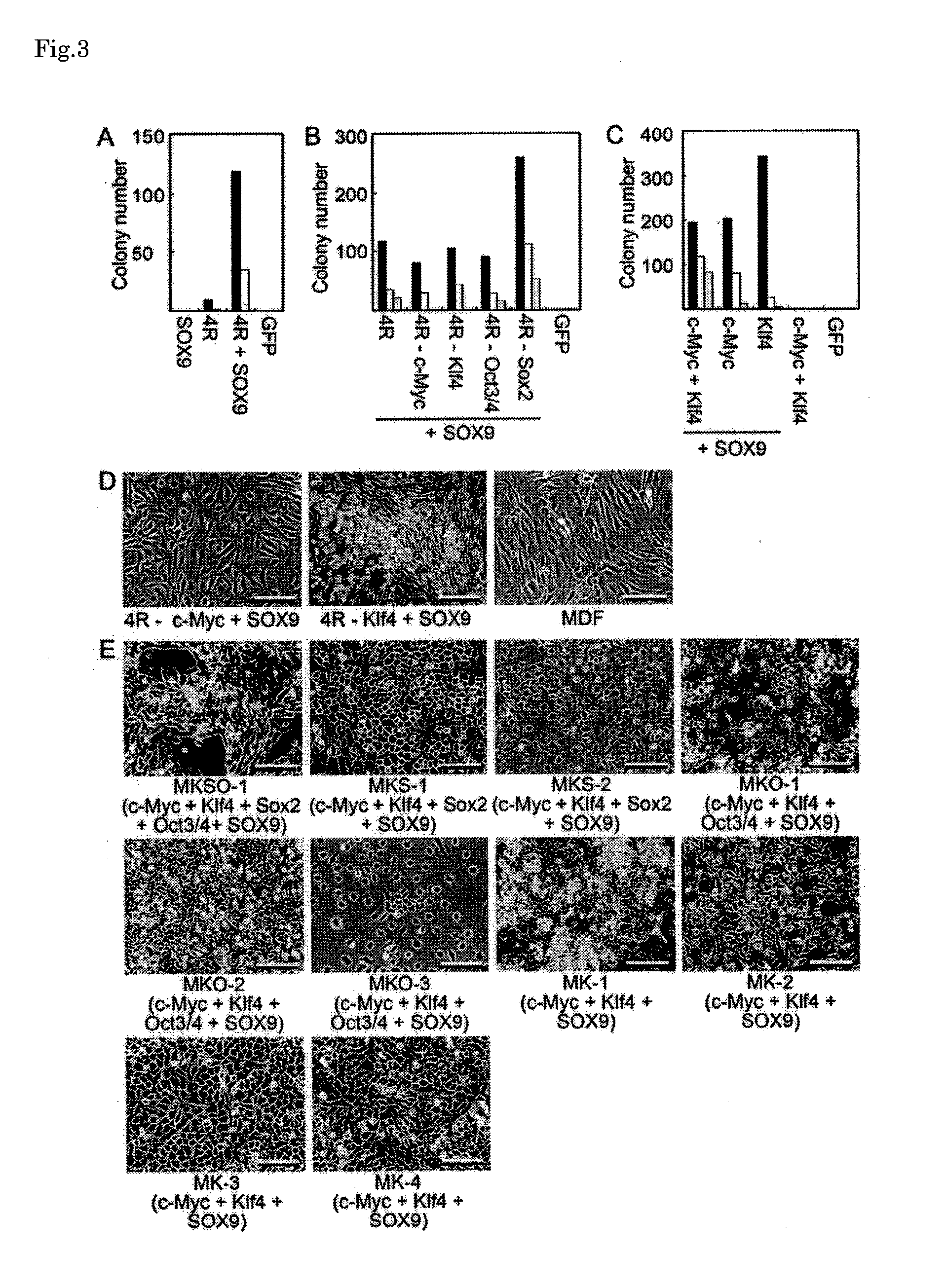Chondrocyte-like cell, and method for producing same
a technology of chondrocytes and cells, applied in the field of chondrocytelike cells, can solve the problems of reducing presenting a definitive therapy, and a big challenge in the aging society of osteoarthritis, so as to reduce the burden on patients, and improve the quality of li
- Summary
- Abstract
- Description
- Claims
- Application Information
AI Technical Summary
Benefits of technology
Problems solved by technology
Method used
Image
Examples
example 1
Production of Chondrocyte-Like Cells from Dermal Fibroblasts and Embryonic Fibroblasts
[0118]1. Production of Col11a2-β Geo Transgenic Mice
Methods
[0119]First, transgenic mice were produced that express β-geo (fused gene of β-galactosidase gene and neomycin resistant gene) under the control of Col11a2 promoter / enhancer sequences shown in FIG. 1, a, using the following procedure.
[0120]742LacZInt, an α2 (XI) collagen gene-based expression vector, includes a mouse Col11a2 promoter (−742 to +380), SV40 RNA splicing sites, a β-galactosidase reporter gene, an SV40 polyadenylation signal, and a 2.34-kb first intron sequence of Col11a2 as a enhancer (Reference Literature 1). In order to produce a β-geo introducing gene, a 0.8-kb neomycin resistant gene fragment was ligated to the 3′-end of a 3.1-kb cDNA fragment that codes for LacZ. The β-geo fragment was incorporated in a 742LacZInt expression vector at the Not I site by replacing the LacZ gene, and a Col11a2-β geo plasmid was produced.
[0121...
example 2
Formation of Cartilage Tissue from Chondrocyte-Like Cells
Methods
[0186]Eleven chondrocyte-like cells (MK-5 to MK-15) were obtained by transfecting the MDFs with the c-Myc, Klf4, and Sox9 genes using the method of Example 1. Two of these chondrocyte-like cell lines (MK-7 and MK-10) were digested with trypsin / EDTA, and suspended in a DMEM medium containing 10 volume % FBS to prepare a cell suspension (1×107 cells / ml). 0.1 ml of the cell suspension was subcutaneously injected to the back of a nude mouse (female, 6 weeks of age, BALE / cA Jc1-nu / nu). The injection site was removed in week 16 post-injection in the MK-7 cell-injected mouse, and in week 8 post-injection in the MK-10 cell-injected mouse. The removed sites were fixed with 4% paraformaldehyde, and embedded in paraffin. Then, tissue slices were produced, and stained with safranine O, fast green, and iron haematoxylin.
Results
[0187]The results are presented in FIG. 9. The subcutaneous adipose tissue of the MK-7 cell- and MK-10 cell...
example 3
Analysis of Genomic DNA of Chondrocyte-Like Cells
Results
[0189]Experiments were conducted to evaluate the identity of the chondrocyte-like cells (MK-1, MK-3, and MK-4) obtained in Example 1, and of the chondrocyte-like cells (MK-5, MK-7, MK-10, and MK-15) obtained in Example 2, as follows.
[0190]First, genomic DNA was obtained from the chondrocyte-like cells using an ordinary method, and fragmented by digestion with EcoRI and BamHI. The genomic DNA fragments were developed by electrophoresis on agarose gel, transferred to a nylon membrane, and subjected to southern hybridization using Klf4 cDNA probes.
[0191]The results are presented in FIG. 10. As can be seen in FIG. 10, the chondrocyte-like cells obtained in Examples 1 and 2 showed different band patterns for different cell lines, each independently representing an established cell line.
PUM
| Property | Measurement | Unit |
|---|---|---|
| Therapeutic | aaaaa | aaaaa |
Abstract
Description
Claims
Application Information
 Login to View More
Login to View More - R&D
- Intellectual Property
- Life Sciences
- Materials
- Tech Scout
- Unparalleled Data Quality
- Higher Quality Content
- 60% Fewer Hallucinations
Browse by: Latest US Patents, China's latest patents, Technical Efficacy Thesaurus, Application Domain, Technology Topic, Popular Technical Reports.
© 2025 PatSnap. All rights reserved.Legal|Privacy policy|Modern Slavery Act Transparency Statement|Sitemap|About US| Contact US: help@patsnap.com



